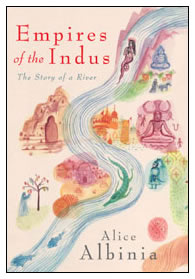/topics/ecology-and-environment
Ecology and Environment
Voices from the villages: Workshop notes organized by the Barh Mukti Abhiyan in 2008 to raise awareness about floods across North Bihar
Posted on 01 Mar, 2009 02:37 AMThe workshop notes are a record of the actual ground level experiences, understandings/misunderstandings and conversations regarding the floods in North Bihar.
The attached files below are the set of the workshop notes. We welcome comments which will passed back to Barh Mukti Abhiyan.
Athirappilly satyagraha crosses one year 25th Feb 2009
Posted on 26 Feb, 2009 11:06 AMDear Friends, We welcome you to support the cause of a dying river in the Western ghats As you are aware, an indefinite Satyagraha led by Chalakudy River Protection Forum has been going on at Athirappilly near the project site since 25th February 2008. A series of programs have been organized in connection with the first anniversary of the Satyagraha to remind the conscience of the society what is in store if we tamper too much with our rivers, the people's longstanding time tested resistance to an environmentally, socially and economically unjust and unviable hydro electric project planned in one of the most beautiful rivers in the Western Ghats, the only basis of survival of millions of people and what has to be the real solution to the energy crisis in Kerala.
Press releases - Ganga river basin authority : SANDRP
Posted on 26 Feb, 2009 10:47 AM
A series of Press Releases from sources indicate the progress on the matter of the Ganga River Basin Authority. It makes for an informative read with a candid discussion in the comments section!
Ganga River Basin Authority for Comprehensive Management of the Ganga Basin
PIB Friday, February 20, 2009
Ministry of Environment and Forests
AUTHORITY ENSURES DEVELOPMENT REQUIREMENTS IN SUSTAINABLE MANNER ENSURING ECOLOGICAL FLOWS IN GANGA
The Government today announced the setting up of a National Ganga River Basin Authority. A statement to this effect was made in Parliament by Shri Namo Narain Meena, Minister of State in the Ministry of Environment & Forests. A Notification in this regard is also being issued by the Government.
Polavaram (embankments in Orissa and Chhattisgarh) proposal before EAC
Posted on 16 Feb, 2009 11:14 AM Himanshu Thakkar has attached herewith a letter just sent to the members of the MEF's Expert Appraisal Committee on the river valley projcets regarding the application of Andhra Pradesh to the MEF for "backdoor" clearance of the embankments to be constructed in Orissa and Chhattisgarh to "protect" the areas of these states from going under submergence due to the Polavaram project. The letter is self explanatory.
Himanshu Thakkar has attached herewith a letter just sent to the members of the MEF's Expert Appraisal Committee on the river valley projcets regarding the application of Andhra Pradesh to the MEF for "backdoor" clearance of the embankments to be constructed in Orissa and Chhattisgarh to "protect" the areas of these states from going under submergence due to the Polavaram project. The letter is self explanatory.
To: Mr. P. Abraham, Chairman,& All the members,Expert Appraisal Committee on River Valley & Hydroelectric projects, c/o Dr Bhowmik,Impact Assessment Division, Ministry of Environment and Forests, CGO Complex, Lodhi Road, New Delhi 110 003
Sub: Objections to EC for Polavaram Multi Purpose Project
Dear Chairman and members of the EAC on River Valley and Hydroelectric Projects, We have come to know from the agenda notes of the 23rd meeting of MoEF's Expert Appraisal Committee for River Valley and Hydroelectric Projects to be held on Feb 16-17, 2009 that the committee will be considering Polavaram Multipurpose Project in Andhra Pradesh by Government of Andhra Pradesh (No. J-12011/74/2005-IA.I) for the proposal for the construction of the embankments to protect the lands in Orissa and Chhattisgarh from going under submergence due to the proposed Polavaram project.
Overview of the 2008 Kosi flood situation from Samajik Shaikshanik Vikas Kendra
Posted on 02 Feb, 2009 09:01 PMThe following article is the latest update of an overview of Kosi floods by SSVK. It reveals the ineffective handling and inadequate supply of materials by the Government in the flood hit regions. It also points out the activities done by various organizations and SSVK itself.
Book Review: Empires of the Indus
Posted on 29 Jan, 2009 10:56 AMEMPIRES OF THE INDUS : THE STORY OF A RIVER - by Alice Albinia
Pages: 366 ISBN-978-0-7195-6003-3 (978-0-7195-6004-0)
Format: hardback / trade paperback
Price: £20 / Rs. 550
Publisher: John Murray, U.K. Empires of the Indus is a comprehensive study of how the river Indus and its waterways have changed the history of the Indian sub-continent. Water is potent: it trickles through human dreams, permeates lives, dictates agriculture, religion and warfare. Ever since Homo sapiens first migrated out of Africa, the Indus has drawn thirsty conquerors to its banks. Some of the world's first cities were built here; India's earliest Sanskrit literature was written about the river; Islam's holy preachers wandered beside these waters. This perhaps captures the essence of this Guardian First Book 2008 awardee, Empires of the Indus , The Story of a River, by Alice Albinia.
Protesting broken promises: Dr. G.D. Agrawal resumes fast-unto-death
Posted on 20 Jan, 2009 12:19 PM
Images of a dying river, handwritten Press releases & more: Images of a Struggle on Flickr Charging the Government of India with not keeping its solemn commitment to keep the River Bhagirathi alive in its pristine stretch from Gangotri to Uttarkashi, Dr. G.D. Agrawal has resumed his fast-unto-death from Makar Sankranti Day, Wednesday, Jan 14, 2009.
You may recall that Prof. G. D Agrawal, former Professor & Dean of Students at IIT-Kanpur, the first Member-Secretary of India's Central PollutionControl Board and one of India's foremost environmental scientists went on a fast from June 13, 2008 to seek uninterrupted flow of River Bhagirathi (Ganga) in its natural form between Gangotri and Uttarkashi. His demand was very limited & specific, i.e., that the River Ganga be allowed to flow in its natural form in this 125 km stretch from its origin. This is the only stretch left now where the Ganga can still be seen in its pristine form. Dr. Agrawal requested the Govt. of India & the State Govt. of Uttarakhand to stop construction of Hydro Electric Projects (HEPs) in this stretch so that river flow was not diverted through tunnels that would destroy its ecology and its unique self-purifying properties. (diagrams are provided in the attached press release). Indians across the world got sensitized and lent their support to Prof Agrawal. Many wrote or met the PM of India and the CM of Uttarakhand and requested them to protect the Holy Ganga , whom Pandit Jawaharlal Nehru described as India's civilizational identity.
Press Release by SANDRP: Why does our Govt have no value for rivers ?
Posted on 08 Jan, 2009 10:32 AMA two day National Workshop on need for policy and legal norms for allowing freshwater flows in Rivers in India on January 3-4, 2009 at Bangalore ended with a unanimous demand that governments must allow continuous, sustained freshwater flows in all perennial rivers of India, whenever, a dam, diversion or hydropower project is planned, constructed or operated. Inaugurating the workshop on the morning of January 3, 2009, Shri L C Jain, former member, planning commission of India (and many other important posts), expressed his pain and anguish on the state of India's Rivers, "It is very disturbing that the acts of commissions and omissions of the authorities have ruthlessly, blindly, heartlessly lead todestruction of almost every major rivers of India. The hearts of the officials and ministers should throb for the millions depending for their needs and livelihoods on the rivers, but it seems that the stones of the South and North block buildings have entered their hearts." Quoting Gandhiji's agenda for the economic independence of India from what he wrote in the Young India on November 29, 1929, Jain said, Land, Water and Air cannot be subject of commerce, but the planners lock up the pain, hunger, malnutrition in the paragraphs of their five year plan documents and do not ensure their inclusion in their actual plans and programmes. He expressed his deep anguish that even the recommendations of the official policies and committees on ensuring freshwater flows in the rivers remain unimplemented.
"Irrigation infrastructure - A view from below"
Posted on 27 Dec, 2008 03:52 AM "Irrigation Infrastructure - A View from below" is a new research study by Chitra Krishnan funded by the "Knowledge in Civil Society" initiative.
"Irrigation Infrastructure - A View from below" is a new research study by Chitra Krishnan funded by the "Knowledge in Civil Society" initiative.








